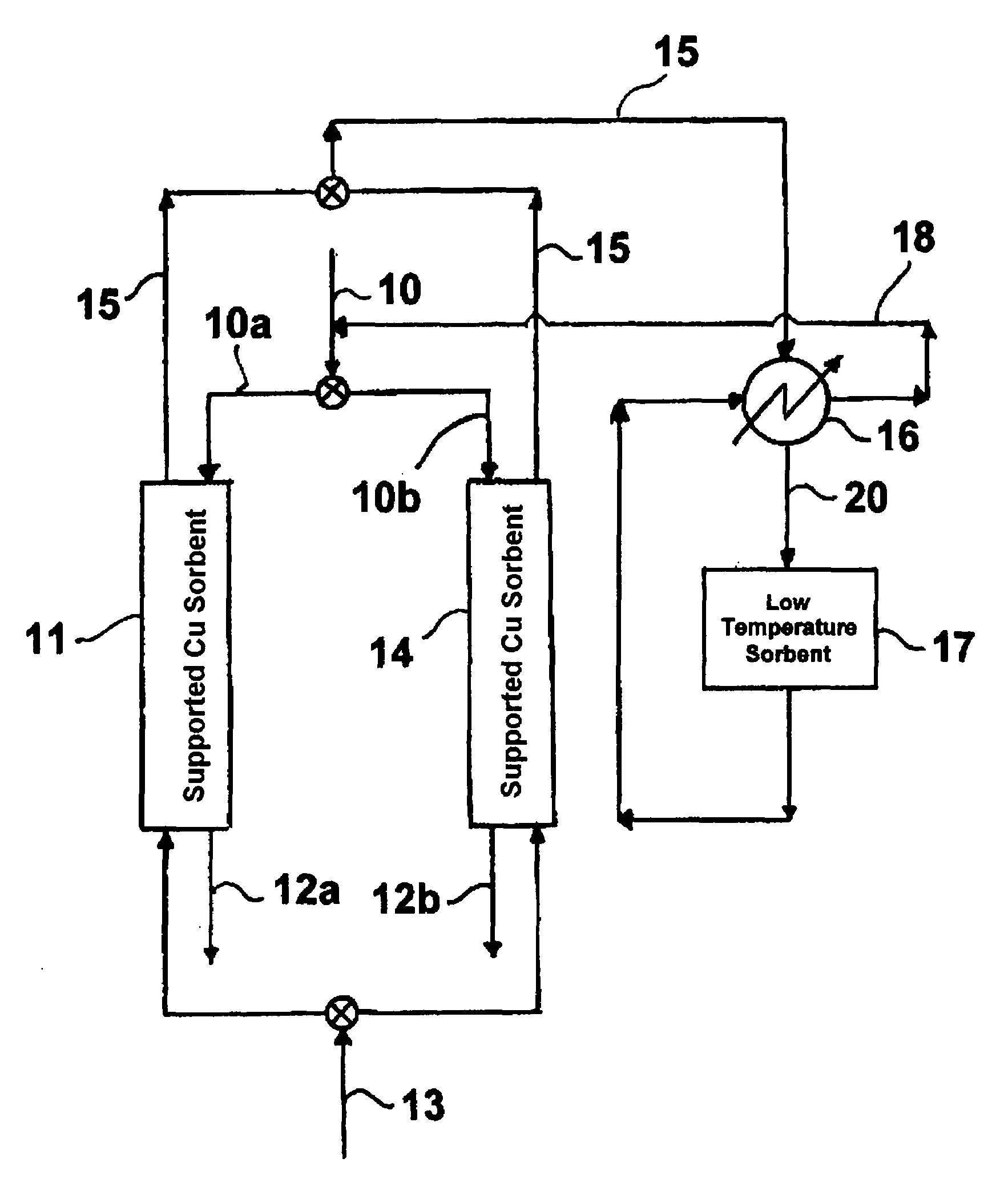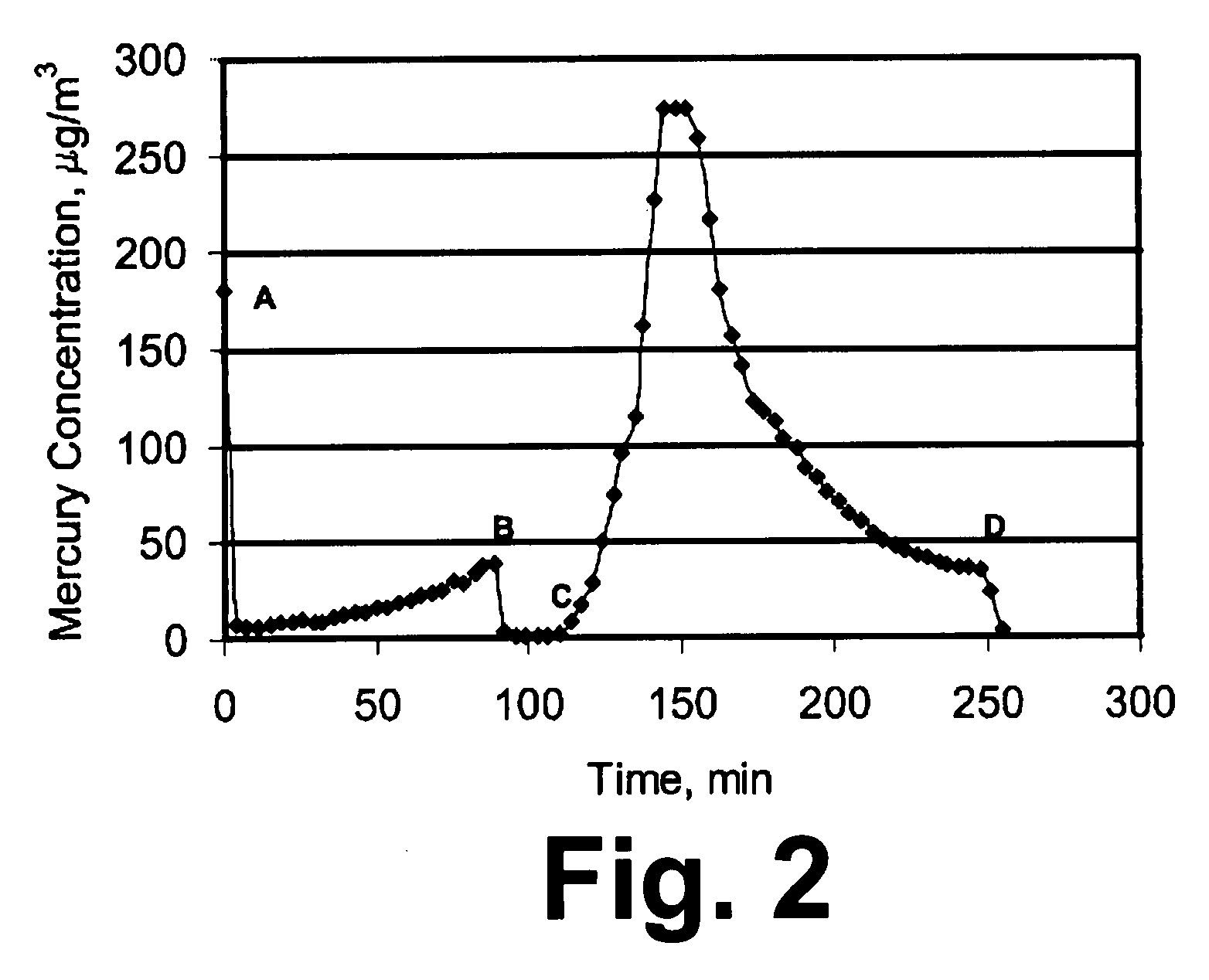Regenerative process for removal of mercury and other heavy metals from gases containing H2 and/or CO
- Summary
- Abstract
- Description
- Claims
- Application Information
AI Technical Summary
Benefits of technology
Problems solved by technology
Method used
Image
Examples
example 1
[0037]A sorbent containing 20 wt. % Cu on alumina was prepared using an incipient wetness method, which is well known to those skilled in the art. Copper nitrate was used as the source of copper. The support used was high surface area gamma-alumina having a surface area of about 255 m2 / g, a bimodal pore size distribution, a median pore size of about 70 microns and 5000 Å, and a total pore volume of about 1.14 cc / g. The support, in the form of ⅛-inch pellets was obtained from Alfa-Aesar. The prepared sorbent was dried at 100° C. for six (6) hours and calcined in air at 400° C. for an additional six (6) hours. The pellets were crushed and sieved to obtain particles in the range of about 250 microns to about 400 microns.
[0038]About 0.5 g of the sorbent was loaded into a quartz reactor enclosed in an electric furnace maintained at a temperature of about 150° C. Initially, the sorbent was pre-reduced in the presence of 2 vol % H2 in a N2 stream to obtain the reduced form of the sorbent. ...
example 2
[0039]In order to show that the process of this invention is particularly suitable for supported / dispersed sorbent, an experiment was performed with a sorbent in which Cu was not deposited on a support. In this example, a pre-sulfided Cu-based sorbent (Katalco 83-3S) was obtained from Johnson Matthey Catalysts having an elemental composition of 8.56% by weight Al, 32.4% by weight Cu, 20% by weight Zn, and 14.3% by weight S. The sorbent had a surface area of 71 m2 / g and a porosity of 0.145 ml / g. About 1.5 g of the sorbent in the size range of about 180 to 250 microns was exposed to a gaseous stream containing 180 micro-g / m3 of mercury and 25% by volume H2, with the balance being N2, at 200° C. A breakthrough plot monitoring the outlet mercury concentration is shown in FIG. 3. Point A in FIG. 3 denotes the start of the exposure period. After about 110 minutes from the start of the exposure period, at Point B in FIG. 3, about 1250 ppm of H2S was added to the gaseous stream. FIG. 3 does...
PUM
| Property | Measurement | Unit |
|---|---|---|
| Temperature | aaaaa | aaaaa |
| Temperature | aaaaa | aaaaa |
| Temperature | aaaaa | aaaaa |
Abstract
Description
Claims
Application Information
 Login to View More
Login to View More - R&D
- Intellectual Property
- Life Sciences
- Materials
- Tech Scout
- Unparalleled Data Quality
- Higher Quality Content
- 60% Fewer Hallucinations
Browse by: Latest US Patents, China's latest patents, Technical Efficacy Thesaurus, Application Domain, Technology Topic, Popular Technical Reports.
© 2025 PatSnap. All rights reserved.Legal|Privacy policy|Modern Slavery Act Transparency Statement|Sitemap|About US| Contact US: help@patsnap.com



